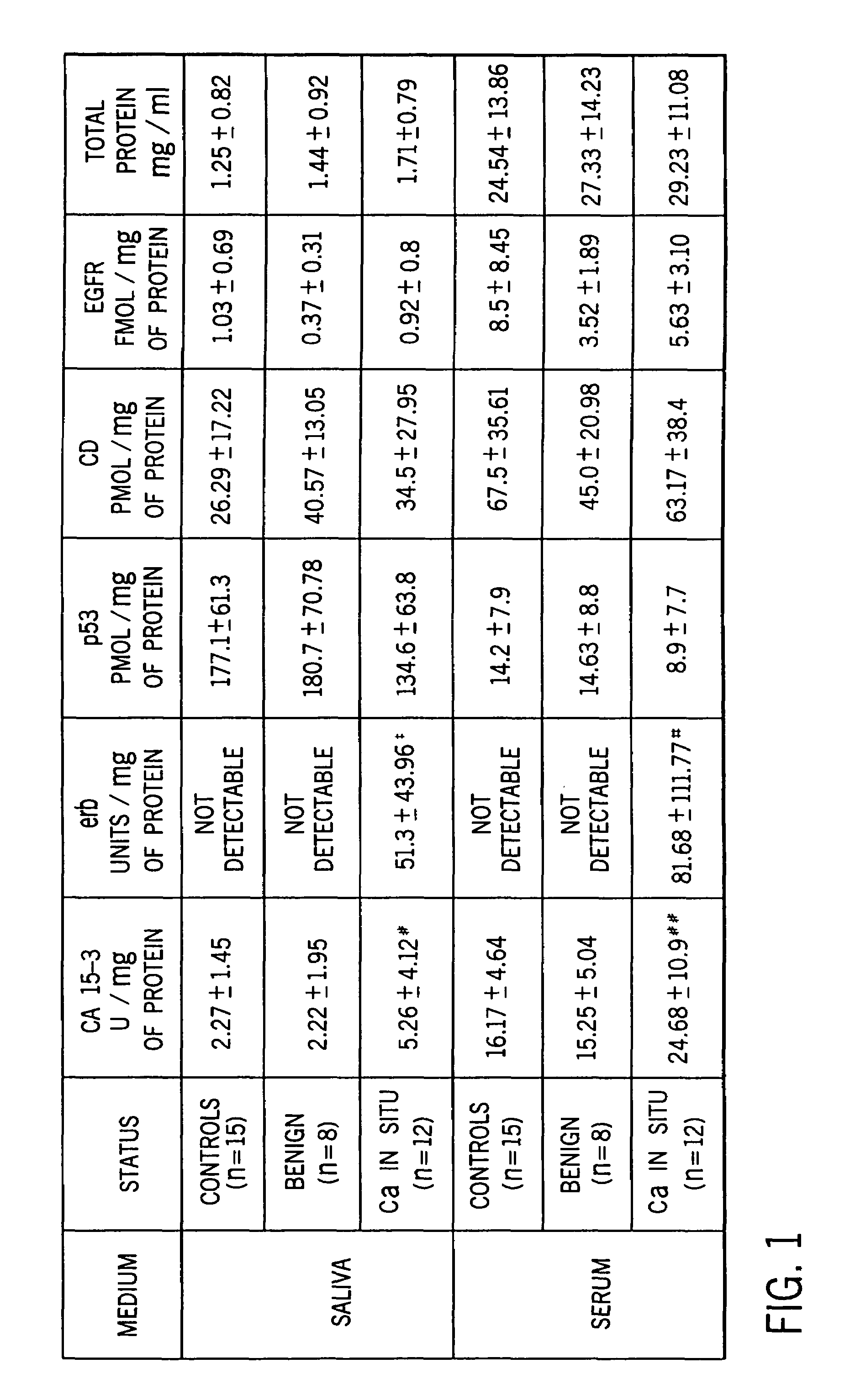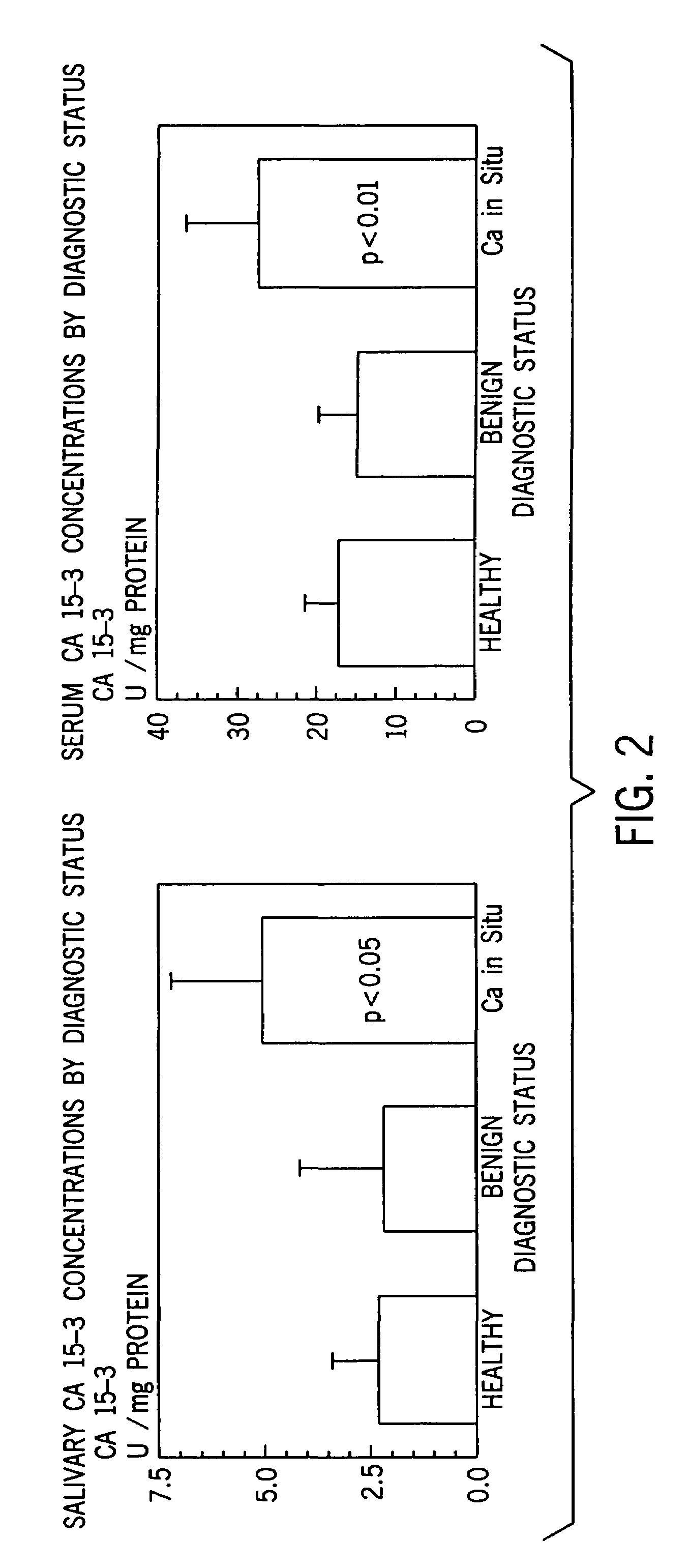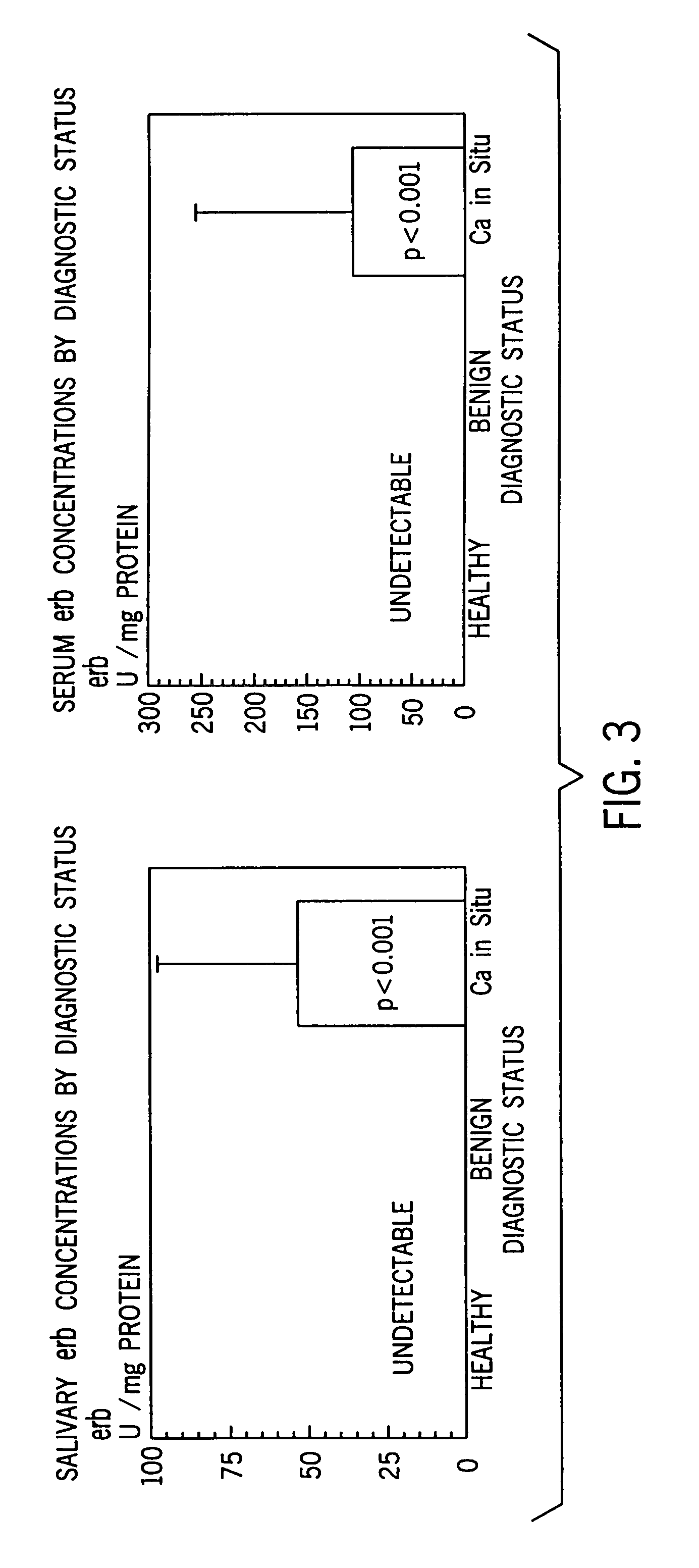Method of diagnosing and monitoring malignant breast carcinomas
a breast cancer and malignant technology, applied in the field of malignant breast cancer diagnosis and monitoring, can solve the problems of not being able to extend the scope of diagnosis innovations, and the diagnostic value of antigens is not high, so as to reduce morbidity and mortality and reduce overall national health care expenditures
- Summary
- Abstract
- Description
- Claims
- Application Information
AI Technical Summary
Benefits of technology
Problems solved by technology
Method used
Image
Examples
example 1
[0057]Statistical Analysis. Statistical analysis were performed using the SPSS statistical software package. A descriptive analysis was made comparing mean marker values for the controls, those with benign tumors, and carcinoma of the breast.
[0058]A one-way analysis of variance for unbalanced data, the general linear models procedure, was used to compare the mean values for the group with breast carcinoma with a non cancer groups. The polynomials formulated using the general linear models procedure are easy to interpret and are appropriate for all sample sizes including those too small to sustain an appropriate multivariate analysis. The Tukey post-hoc analysis was used for significant linear models.
[0059]Considering that erb was undetected among controls and benign lesions for both saliva and serum, a one way sample t-test was performed. Due to the small sample size, issues concerning the specificity and sensitivity of the panel of markers were not addressed, but will be investigat...
example 2
[0060]Specimen Collection. Stimulated whole saliva specimens were collected for a 5 minute period using a cube of paraffin as a stimulant (Navasesh, 1982)17 Salivary flow rates were determined gravimetrically. All specimens were collected in the morning thereby controlling for any possible effects that circadian rhythm may produce in marker concentration. Samples can be frozen for future analysis. Blood was also drawn at the time of saliva collection by a phlebotormist. None of the participants exhibited cancerous or precancerous lesions in the oral cavity at the time the specimens were collected.
[0061]The frozen saliva samples were thawed and centrifuged at 500–1500 G for 20 min to precipitate cells and mucin in order to extract the bio-marker proteins. The clear saliva extract and the serum from the blood specimens were analyzed for total protein and the panel of biomarkers.
example 3
[0062]Total Protein. A colorimetric assay for measuring total protein concentration, based on the color change of Coomassie brilliant blue G-250 dye in response to various concentrations of proteins, was used (Bio-Rad Kit). Specimens were read on a spectrophotometer and absorbance measured at 595 nm. Total protein concentration of the samples was determined from a standard curve constructed with bovine gamma globulin standards.
PUM
 Login to View More
Login to View More Abstract
Description
Claims
Application Information
 Login to View More
Login to View More - R&D
- Intellectual Property
- Life Sciences
- Materials
- Tech Scout
- Unparalleled Data Quality
- Higher Quality Content
- 60% Fewer Hallucinations
Browse by: Latest US Patents, China's latest patents, Technical Efficacy Thesaurus, Application Domain, Technology Topic, Popular Technical Reports.
© 2025 PatSnap. All rights reserved.Legal|Privacy policy|Modern Slavery Act Transparency Statement|Sitemap|About US| Contact US: help@patsnap.com



